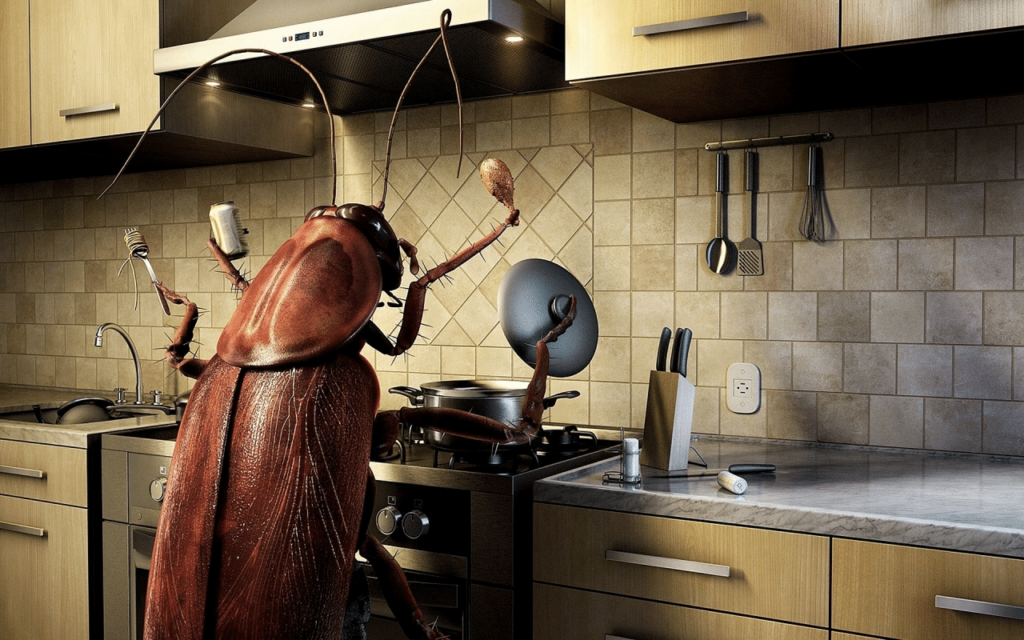
Dealing with bugs in the kitchen can be frustrating, but with a systematic approach, you can effectively eliminate them and prevent future infestations. Here’s a guide on how to get rid of bugs in your kitchen:
Identify the Type of Bug
1. Observation: Take note of the type of bugs you’re dealing with. Common kitchen pests include ants, cockroaches, fruit flies, pantry moths, and beetles. Identifying the specific type of bug will help you choose the most effective elimination method.
2. Look for Signs: Check areas where bugs are typically found, such as around food sources, in cabinets, near trash bins, and around sinks. Look for droppings, egg casings, or chewed packaging, which can indicate the presence of pests.
Eliminate Food Sources and Access Points
1. Clean Thoroughly: Keep your kitchen clean and free of crumbs, spills, and food residues. Wipe down countertops, sweep floors, and clean dishes promptly after meals. Pay special attention to areas under appliances and behind cabinets where food particles can accumulate.
2. Store Food Properly: Store food in airtight containers made of glass, plastic, or metal to prevent bugs from accessing it. Keep pantry items such as grains, cereals, and flour sealed tightly to avoid attracting pests.
3. Dispose of Trash Properly: Seal garbage bags tightly and empty trash bins regularly. Clean trash bins and recycling bins frequently to remove food residues that can attract pests.
4. Fix Leaks: Repair any plumbing leaks promptly as moisture attracts pests like cockroaches and ants. Check under sinks and around faucets for signs of leaks and moisture buildup.
Use Natural Remedies and DIY Traps
1. Vinegar: Create a solution of equal parts vinegar and water and use it to wipe down surfaces and countertops. Vinegar’s acidity helps repel ants and other insects.
2. Essential Oils: Certain essential oils like peppermint, lavender, and tea tree oil are natural insect repellents. Mix a few drops with water in a spray bottle and use it to spray areas where bugs are seen.
3. DIY Traps: Make homemade traps using ingredients like vinegar and dish soap for fruit flies, or a mixture of sugar and borax for ants. Place these traps near areas where bugs are active.
Use Commercial Insecticides or Baits
1. Insecticides: Choose insecticides labeled for indoor use and specific to the type of bug you’re targeting. Follow the manufacturer’s instructions carefully when applying insecticides to ensure safety and effectiveness.
2. Baits: Use bait stations or gels designed to attract and eliminate ants, cockroaches, or other pests. Place baits in areas where bugs are commonly found, but out of reach of children and pets.
Prevent Future Infestations
1. Seal Cracks and Gaps: Inspect your kitchen for cracks, gaps, and holes where pests can enter. Seal gaps around windows, doors, pipes, and vents using caulk or weatherstripping.
2. Maintain Outdoor Areas: Keep outdoor areas around your home clean and free of debris that can attract pests. Trim vegetation away from the house and store firewood away from the foundation.
3. Regular Inspections: Conduct regular inspections of your kitchen and pantry to catch any signs of pests early. Addressing issues promptly can prevent small problems from turning into larger infestations.
4. Professional Pest Control: If DIY methods aren’t effective or if you have a severe infestation, consider hiring a professional pest control service. They have the expertise and tools to identify the source of the infestation and implement effective treatment methods.
By following these steps and maintaining good hygiene practices, you can effectively get rid of bugs in your kitchen and prevent them from returning. Consistency and thoroughness are key to achieving long-term success in pest control.

